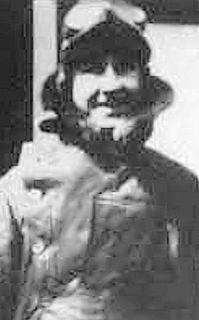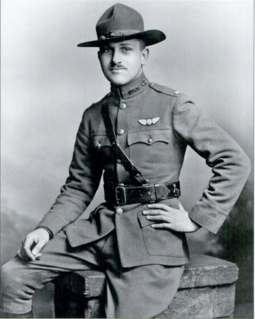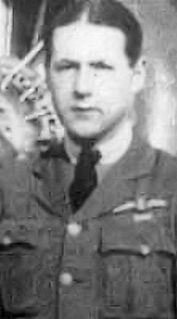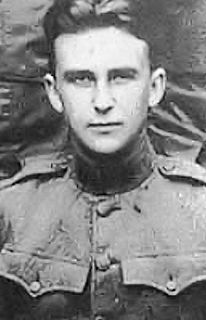William Gordon Claxton DSO, DFC & Bar was a Canadian World War I flying ace credited with 37 victories. He became the leading ace in his squadron.

William C. (Bill) Lambert was an American fighter pilot who flew in World War I. He was probably the second-ranking American ace of World War I. He claimed 18 air-to-air victories, eight fewer than "Ace of Aces" Eddie Rickenbacker and was awarded the Distinguished Flying Cross.

Francis Warrington Gillet was an American flying ace who served in both the American and British armed forces as a pilot during World War I. With 20 credited aerial victories he was the highest scoring pilot flying the Sopwith Dolphin, and the second highest scoring American, only surpassed by Eddie Rickenbacker.

Joseph Frank Wehner, also known as Fritz Wehner, was an American fighter pilot and wingman to Frank Luke.

Lieutenant Lawrence Kingsley Callahan was a World War I flying ace credited with five victories.

Lieutenant Jesse Orin Creech was a World War I flying ace credited with seven aerial victories. He shot down the final victory of the war for his squadron.

Lieutenant John Sharpe Griffith, was an American World War I flying ace credited with seven aerial victories while serving in the British Royal Flying Corps and Royal Air Force, also serving during the Allied intervention in the Russian Civil War. He returned to service during World War II in the United States Army Air Forces, and finally retired in 1956.

Captain Frank Lucien Hale was a World War I flying ace credited with seven aerial victories. He later accompanied Charles Lindbergh in a transcontinental flight.

Lieutenant Lansing Colton Holden, Jr. was a World War I flying ace credited with seven aerial victories.

Captain Harold Albert Kullberg was a World War I flying ace credited with 19 aerial victories. Though he scored his victories with the Royal Air Force, Kullberg was an American citizen. He was rejected for training as an American pilot because he was too short. He then joined the Royal Flying Corps in Canada on 7 August 1917.
Lieutenant Eugene Seeley Coler was an American World War I flying ace who served in the British Royal Flying Corps and Royal Air Force. He was credited with 16 aerial victories.
Captain George Brian Gates was a World War I flying ace credited with 15 aerial victories, twelve of them enemy aircraft, and three observation balloons.

First Lieutenant Lloyd Andrews Hamilton was a World War I flying ace credited with ten aerial victories. During five months of 1918 he became an ace with the Royal Air Force (RAF) and then again with the United States Air Service (USAS). Hamilton Air Force Base is named after him.

Lieutenant Jacques Michael Swaab was an American World War I flying ace with the 22nd Aero Squadron who was credited with ten victories. He later worked in the Hollywood film industry.

Colonel Reed Gresham Landis was an American military aviator and the only son of federal judge Kenesaw Mountain Landis, the first Commissioner of Baseball. He served in the air services of the United States Army during World War I and World War II, and was credited as a flying ace during the former, with twelve aerial victories.

Lieutenant Kenneth Russell Unger was an American World War I flying ace credited with fourteen aerial victories. His candidacy rejected by his own nation, Unger applied to the British Royal Flying Corps for military pilot training in June 1917. Once trained, he was assigned to the Royal Naval Air Service (RNAS). As the RNAS was merged into the Royal Air Force, Unger scored his aerial victories between 26 June and 1 November 1918. In later life, Unger remained involved in aviation and served again during World War II. He also joined the U.S. Navy Reserves, rising to the rank of rear admiral.

Captain Emile John Lussier was an American flying ace during World War I. He was credited with eleven confirmed aerial victories while flying with the Royal Air Force.

Lieutenant Howard Burdick DSC DFC was an American World War I flying ace credited with eight confirmed aerial victories.

Lieutenant Chester Ellis Wright was an American World War I flying ace credited with nine confirmed aerial victories. He was the top scoring ace for his squadron.
Captain William Stanley Jenkins was a Canadian flying ace during World War I. He was officially credited with 12 aerial victories, having scored his first two while still on sick leave.















